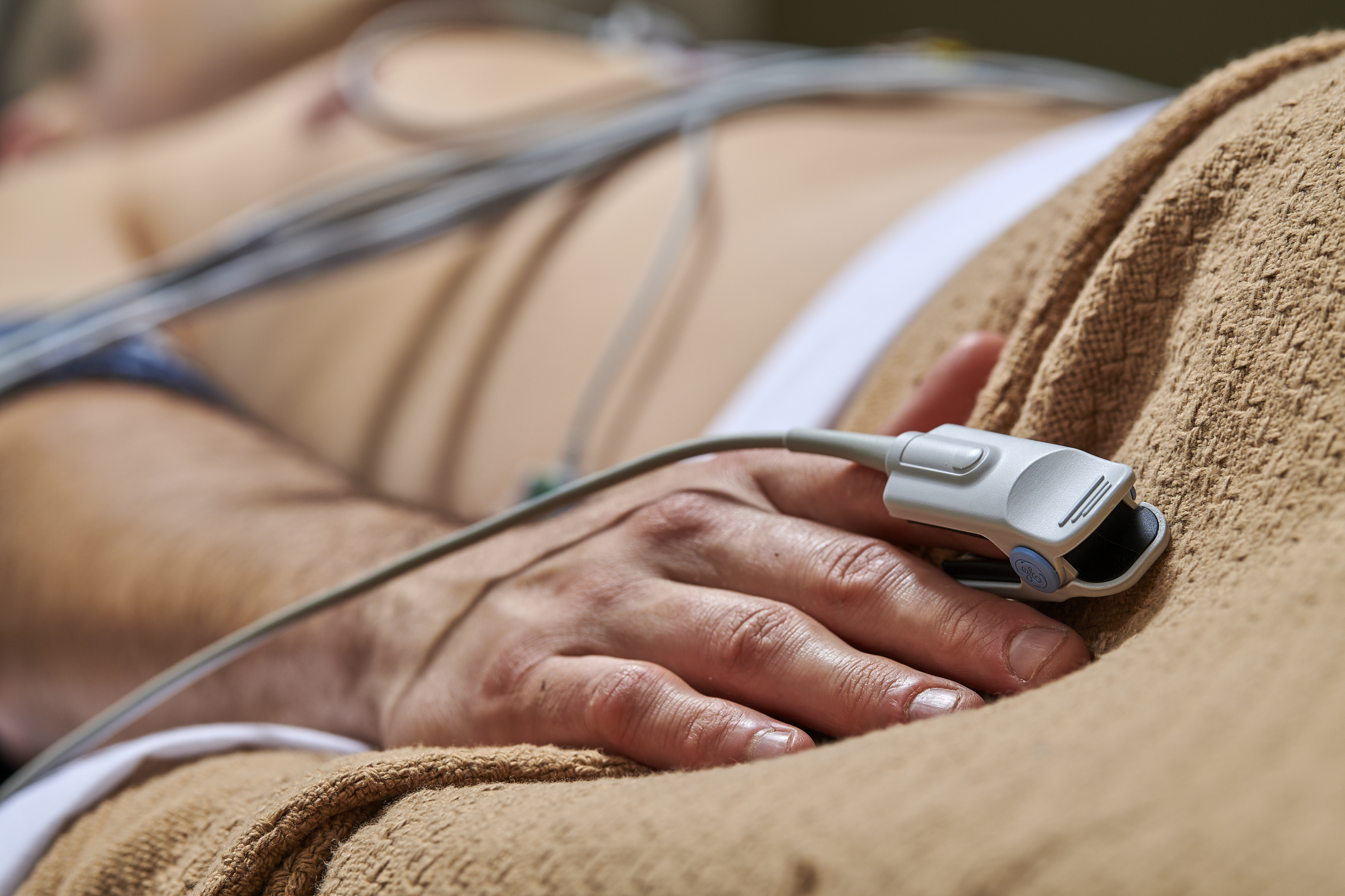Measuring oxygen saturation (SpO2) is essential to patient monitoring during anaesthesia administration. The most common way to test blood's oxygen levels is to use a pulse oximeter, otherwise known as a SpO2 sensor. Reliable SpO2 sensors can provide anaesthesia care teams with the peace of mind that they are receiving accurate patient data in real time.
Dr. Mario Dauri, professor and head of the anaesthesia department at Policlinico Tor Vergata in Rome, Italy, shares his experience using SpO2 measurements1 when providing patient care and when teaching his residents at the university hospital.
Securing Strong Signals in low-perfusion conditions
"With the GE TruSignal technology, we benefit the most from the stability of the signal," Dr. Dauri said. "Even in low-perfusion conditions, the signal stays stable—more stable than other technologies."
Low or inadequate perfusion refers to decreased arterial blood flow in the extremities, such as the fingers, where SpO2 sensors usually make contact with a patient for readings. To function effectively in low perfusion conditions, these sensors need to be sensitive enough to detect a faint signal but be durable enough to avoid failure when a patient moves. An adhesive keeps GE's disposable sensors2 secured to a patient's hand, maintaining an anchored and stable connection.
To function effectively in low perfusion conditions, these sensors need to be sensitive enough to detect a faint signal but be durable enough to avoid failure when a patient moves.
"In the operating theater, it is very rare for GE TruSignal to lose signal," Dr. Dauri expressed. "In the past two or three years, I can't remember a time when the signal failed from patient movement or from fluid in the connector. This aspect of the product is really quite efficient." This reliability is due to GE's high-quality cable materials that resist operational failure due to fraying and kinking and that protect the device from water and other fluids.
Supporting Adequacy of Anaesthesia
"Adequacy of Anaesthesia , for us, is a must. I believe it is the standard of care." Dr. Dauri said. "Because with every case, we have to monitor possible overdosage of anaesthetics, the level of hypnosis, muscle relaxation, train of four, nociception, etc. And this is all easy for us to do because we also have GE's TruSignal."
TruSignal SpO2 technology connects seamlessly with GE Healthcare's Adequacy of Anesthesia3 concept, which combines neuromuscular transmission monitoring, entropy monitoring, and the Surgical Pleth Index (SPI), allowing clinicians to tailor, deliver, and monitor an individualised anaesthesia experience for each patient. It measures SPI utilising a reusable or disposable SpO2 finger sensor.
TruSignal's role is to obtain a photoplethysmographic waveform4, which then creates SPI values. These SPI values provide real-time insight into a patient's hemodynamic responses to surgical stimuli, thereby allowing an anesthesiologist to adjust analgesic medications as needed.
Learn more about GE Healthcare’s Adequacy of Anaesthesia concept.
"The objective of SPI evaluation—and the entire concept of Adequacy of Anaesthesia—is an added value for us to train our residents on," said Dr. Dauri, as he reflected on the intersection between technology and teaching the next generation of anaesthesiologists.
"Antinociception is a crucial aspect of our job, as well as hypnosis and muscle relaxation," he explained. "Every patient is different, however, and we need to administer the right dosage of anaesthetics to each; Adequacy of Anaesthesia allows us to do that."
Promoting Affordable, Innovative Care
Dr. Dauri said his hospital uses many technologies but emphasises that some are more costly even though they lack more innovative features. When compared with other market leaders in SpO2 monitoring, GE's TruSignal SpO2 technology offers more reliable features, stable monitoring, and cost-effectiveness. "These things I am saying are not my opinions, but they are scientifically determined and respected," Dr. Dauri said. "It is, however—perhaps—my opinion that this is the most important technology now available on the market."
*This interview has been edited for clarity.
REFERENCES
1. https://www.gehealthcare.com.au/products/pulse-oximetry
3. https://www.gehealthcare.com.au/products/accessories-and-supplies/adequacy-of-anesthesia-accessories
4. https://www.sciencedirect.com/topics/medicine-and-dentistry/photoelectric-plethysmography





